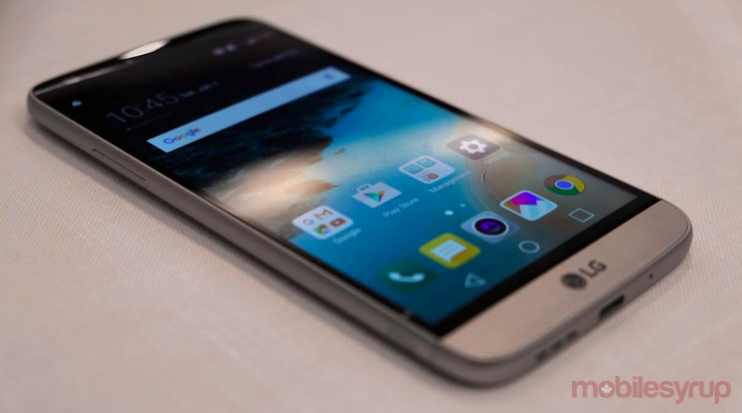
For LG, Mobile World Congress is an open table to gamble and take a shot at winning a larger pot. And its main card to play is the G5, a revamped iteration of its flagship line that brings newfound modularity to a smartphone.
It can be argued momentum is on LG’s side. Whereas splashy pageantry is expected from Samsung, its Korean rival doesn’t feel the same kind of pressure. Still, this is an opportunity to win favour with consumers that could reap rewards further down the line.
Video G5 hands-on by Patrick O’Rourke
The G5 represents a significant departure from the design language the company has used until now. The leather back of the G4 was innovative and helped carve a fashionable niche for those who paid attention, but plastic is now passe, whereas glass and metal are in.
So, the G5 adopts a metal body, includes a removable battery and presents a modular strategy with a wider ecosystem that LG hopes will have some takers amongst vendors and consumers, alike.
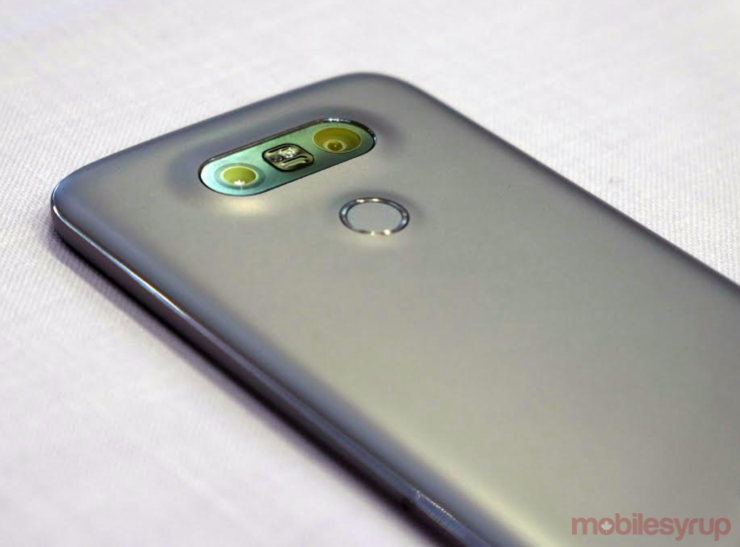
Hardware
The metal body already makes the G5 look different than any LG handset that came before it. Stylish with an air of luxury, it maintains an understated presence, meaning that it is straight-up metal; no brushed or patterned treatments to make it stand out more. Though it doesn’t really need a closer look, the lack of an antenna band is one of the more interesting elements to what LG has crafted here.
Dr. Ramchan Woo, VP of product planning at LG, says the company’s method in doing this was a “secret” but it involves a micronized “special treatment” of the metal that hides the slits to enable signals to pass through without having to separate the panel. Despite that, the process shuts out wireless charging, which won’t be supported on the device.
Woo spent little time on specs, noting the 7.5mm thickness (8mm at its thickest point), 32GB of storage, 4GB of RAM and Snapdragon 820 processor. Clock speeds and performance data weren’t shared at the time.
The 5.3-inch IPS display also sports the same resolution, yet does include a tiny chipset that powers the Extended Always-On features that shows the time and notifications without waking up the phone. When turned on 24/7, Woo says the feature consumes 0.8% of total battery per hour. The content is also fixed, given that burn-in isn’t an issue with IPS LCD panels.
The use of metal does seem to raise the G5’s weight from the lightness of its predecessors, but it’s not yet clear by how much it does that. The phone doesn’t feel altogether more or less wieldy than the G4, though moving the volume rockers to the left side does shift the ergonomics slightly. I caught myself accidentally pressing them twice. The power button on the back remains, and is now circular and doubles as a fingerprint reader.
There are two rear lenses above that, which I’ll touch on a little further down, neither of which is specially designed for depth-of-field photography.
The speaker has been moved to the bottom, next to the microphone and USB-C port, as LG begins its commitment to the burgeoning standard. A microSD card slot is also on board, ensuring that memory expansion wasn’t sacrificed. Woo wasn’t specific as to its storage limit, but we’ve since learned that the phone can accommodate microSD cards with up to 128GB of storage.
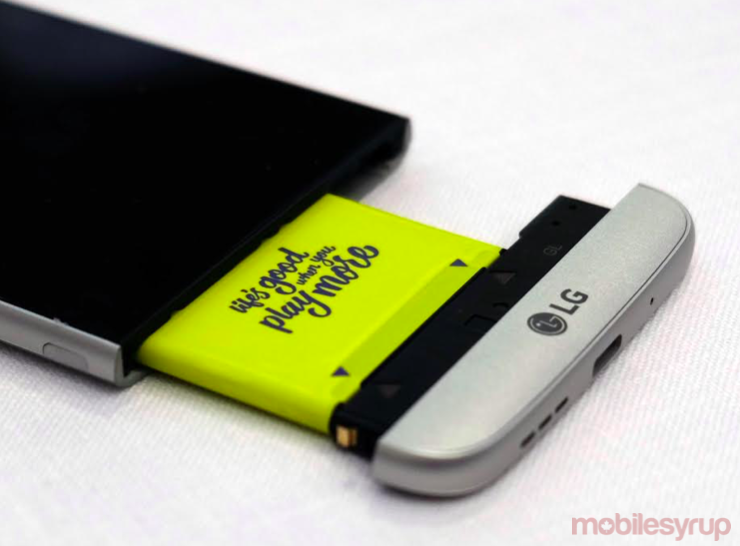
Going modular
The fact that LG has a removable battery in spite of the metal body is one thing, but having a modular strategy behind it is the most impressive takeaway from the device. Pushing a small button on the bottom left side releases the bottom compartment just enough to pry it open and slide out the battery from below. It felt a little odd at first, but after a few tries, it became easier to get the hang of it.
The 2,800mAh battery is lower than other phones of the same size and rank, so it’s unclear how well it will perform in real-world settings. As is, though, the battery is the centrepiece of this modular approach because it is the component that connects hardware add-ons to the unit.
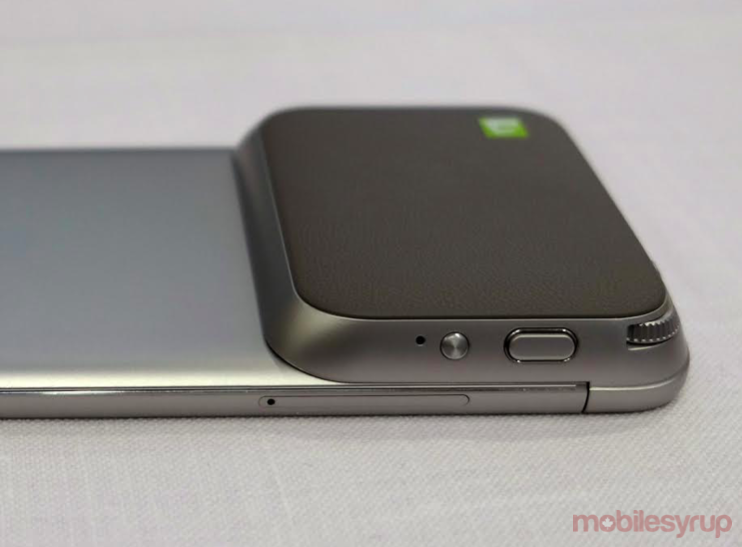
Case in point, Woo unveiled two accessories that do just that. One is the LG Cam Plus, a camera grip that adds analog controls, like a shutter, video recording button and zoom dial. It adds extra girth and features a leather-like front for better handling, but also has a battery inside that bumps up the G5’s overall capacity to 4,000mAh, good for another six-to-eight hours of shooting, he says.
The other is the LG Hi-Fi Plus, a portable DAC (digital-to-analog converter) co-designed with high-end audio brand Bang & Olufsen that raises quality from the native 24-bit in the G5 to 32-bit. Audiophiles may rejoice, though it’s unclear how much mainstream consumers will take to something that feels niche. It does upscale any audio content it plays, so streaming music lovers should sense an improvement, regardless. Since the microphone jack is at the top of the G5, it would be possible to listen at regular 24-bit through that, or 32-bit through the jack at the bottom where the Hi-Fi Plus is slotted in.
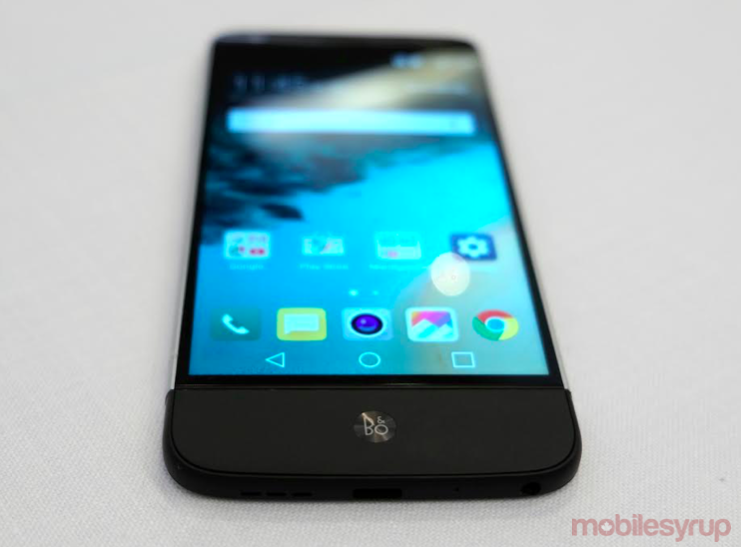
In a nice touch, it can also function as a standalone DAC, compatible with other smartphone devices, platforms and PCs and Macs.
Whether or not there will be more of these types of accessories by launch day remains to be seen. What is confirmed is that LG is opening this up to third-party vendors to create their own add-ons that can work with the phone. If this were Apple or Samsung, it would be easier to conclude a path to success in such an endeavour, but with LG, it is a toss up until or unless consumers embrace it. Pricing for these products will also be a determining factor.
Inevitably, questions may arise over the merits of having to carry around extra components that serve singular purposes when apps might be able to pull the same weight. The two I saw serve highly functional, albeit niche, purposes that won’t resonate with everyone, yet I still came away intrigued at the possibilities. A larger battery down the line in the same form factor? Sure, why not. A mini-projector of some kind? Certainly possible? Another unique camera accessory that can add another lens? Maybe.
It sounds like pie in the sky, in some respects, but the open architecture presented here does mean LG or other manufacturers can go a little nuts in developing add-ons.
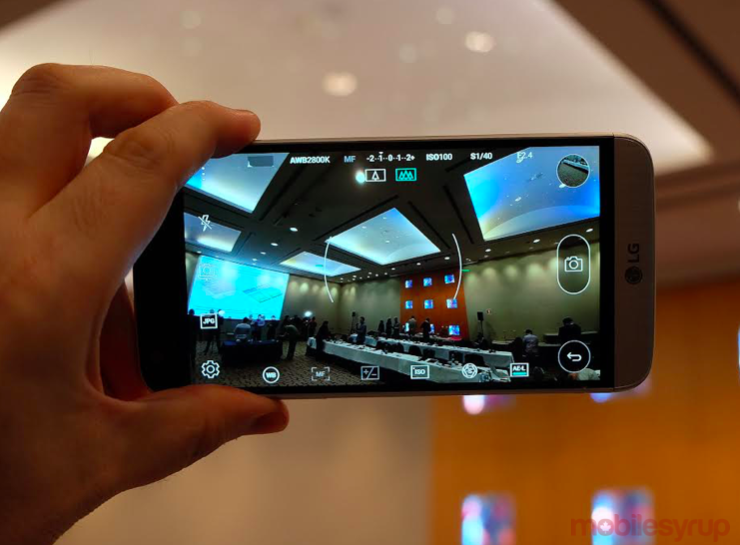
Camera
Personally, I felt the G4 was the best smartphone camera of 2015, particularly because of the superb manual mode. In going with two rear lenses in the G5, LG is attempting to solve a problem of wider angles. The lack of optical zoom is already old hat in smartphones, so the G5 effectively has two focal depths — the larger one being 135-degrees wide and the shorter one being the standard 75-degrees.
The difference between the two, including the seamless transition from one lens to another (with a slight delay), is stark, to say the least. LG has managed to put in a field of view that is more typical of home security cameras. I did catch a slight fish-eye effect on the fringes but wasn’t in an environment where I could truly assess it.
After eschewing filters for unknown reasons, LG is bringing them in with an ode to old school film. The nine filters initially available will be based on film styles of the past, rather than the artistic and funky ones usually offered elsewhere, though the visual variations might render that distinction moot to some users. They can be previewed in real-time, and can also be applied to recording video, too.
In light of all the additions, it’s not evident that anything was subtracted. The camera interface looks identical, save for the new options that are now included. I also never got a straight answer on whether the f/1.8 aperture was the same or if LG lowered it further to push the envelope on low-light shooting. Laser autofocus continues to do its thing while the colour spectrum sensor so lauded at last year’s G4 launch received nary a mention this time around.
That may not be surprising, as there wasn’t much to fix on that front, except for perhaps more consistent performance in Auto mode. A few test shots on a demo unit indicated solid results, but only proper testing will show if LG can hold off competitors who are sure to up their camera game this year.
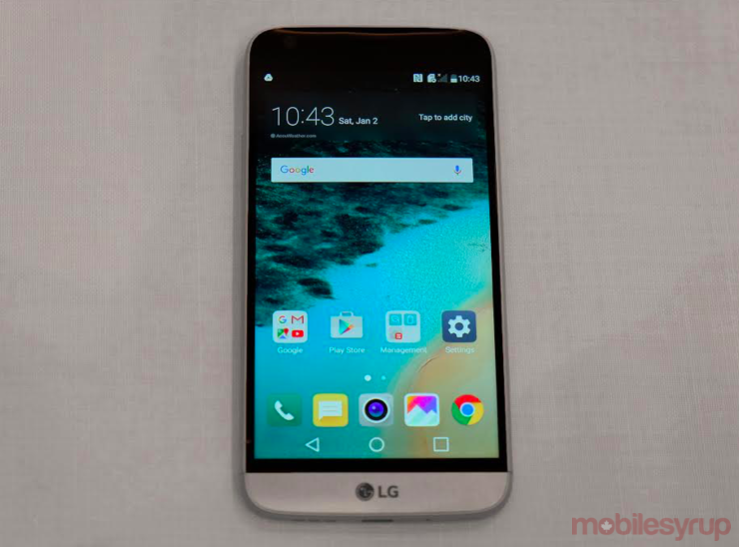
Software
LG’s old bugaboo from past devices has been its erratic take on Android with its UX overlay. Very little was mentioned about this other than that the app drawer being jettisoned in favour of a more open setup. In this new iPhone-esque layout, apps and folders are laid out in a grid from one page to the next — a design tweak Woo says has been proven to work with market research.
At first glance, the home screen and overall feel of the interface feels a little different, not a major step in any particular direction. The notifications shade is the same layout as in previous LG handsets, refuting notions that more of stock Android will permeate the G5. That’s not meant to be a conclusion, simply an observation that the G5 didn’t really feel like it was influenced by stock Android, like I did when I first held the HTC One A9, for example.
One software addition that could help is Friends, melding an ecosystem of hardware products that can speak the same language and simplify setup and pairing. LG unveiled a few of these, including the LG 360 VR, LG 360 Cam and LG Rolling Bot, a Sphero-like robot that is about the size of a 5-pin bowling ball, and includes an onboard camera and microphone to double as a home surveillance and pet accessory.
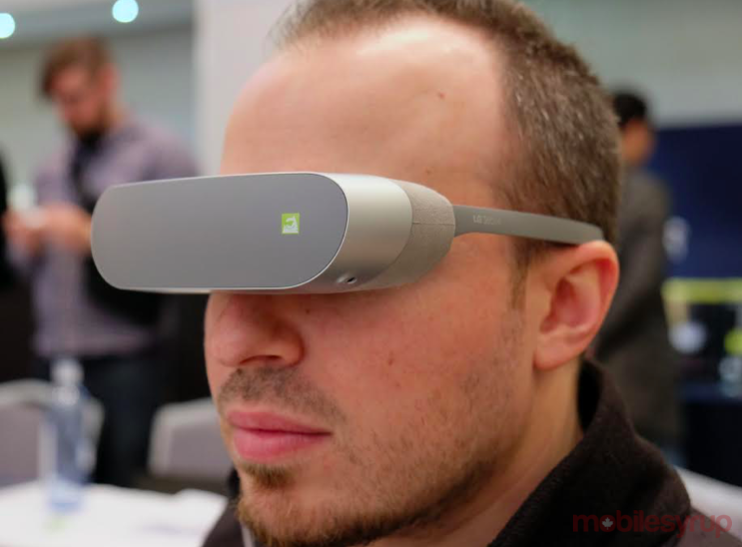
The other two are self-explanatory. The 360 VR is LG’s first shot at a virtual reality headset, lacking a strap at the top to avoid “VR hair,” and weighing a mere 100 grams. Rather than outfit it with various components, the G5 will reportedly do the heavy lifting instead, meaning the headset is little more than an accessory tied to the phone. That should be reflected in the price, but only time will tell.
The 360 Cam uses an upright form factor with two identical 16MP lenses to capture 2K video in 360-degrees. A simple button push on one side snaps still photos, while holding it triggers video recording, making it as simple to use as a pocket video cam from days gone by.
The camera can pair directly with the G5 for a live view and to stitch the two shots together for a fully rendered photo or clip.
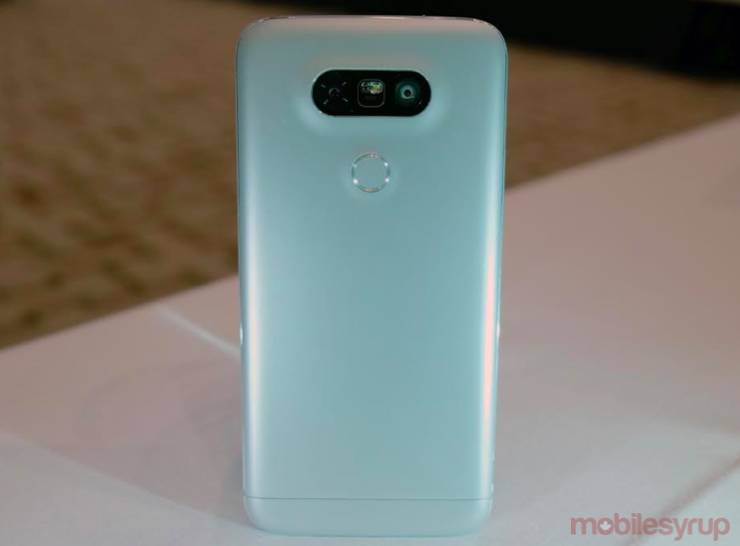
Wrap Up
Availability isn’t confirmed yet, but early April seems to be the teased launch period, putting the G5 out in an earlier timeframe than its predecessor last year. Pricing isn’t known, either, and it will be interesting to see how aggressive LG is on that front, considering it has to undercut Samsung, one way or another.
The G5 is clearly part of a bigger picture that includes not only the modularity LG is attempting, but also the Friends products that are designed to complement each other. The phone itself will need to be successful in order for the other elements to achieve any notoriety, a fact LG is no doubt fully aware of. Simply from the way it looks and feels, this is the company’s best smartphone to date, leaving behind a tradition of using materials that looked like metal, and finally going with a proper metal design.
The camera will also be interesting to watch. Will a wider angle be something users want more often than not? Will film filters be perceived any differently? Time will tell.
No Canada-specific information has been released as yet, but we will update pricing and availability once it has been confirmed, including which carriers will be offering the G5.
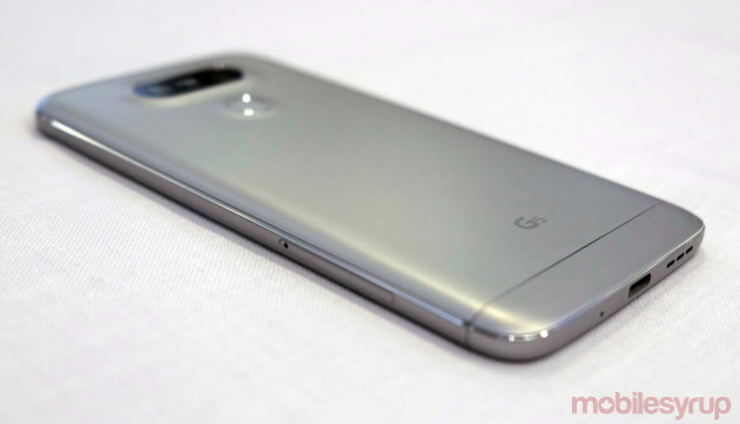
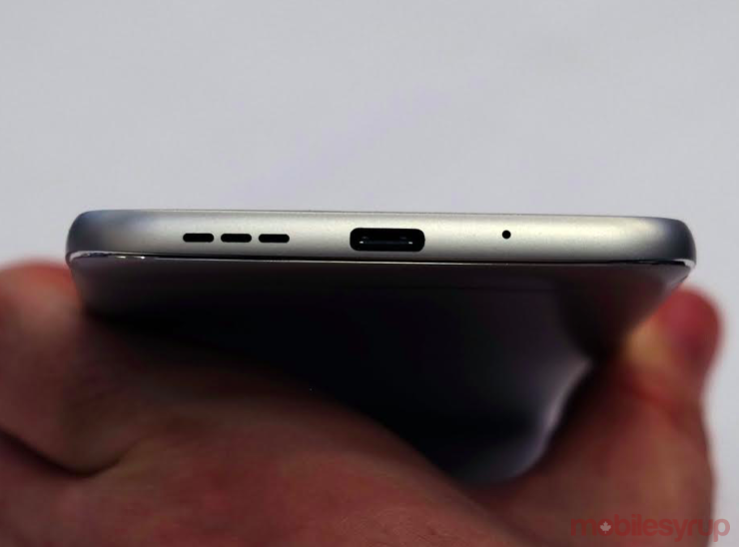
MobileSyrup may earn a commission from purchases made via our links, which helps fund the journalism we provide free on our website. These links do not influence our editorial content. Support us here.


